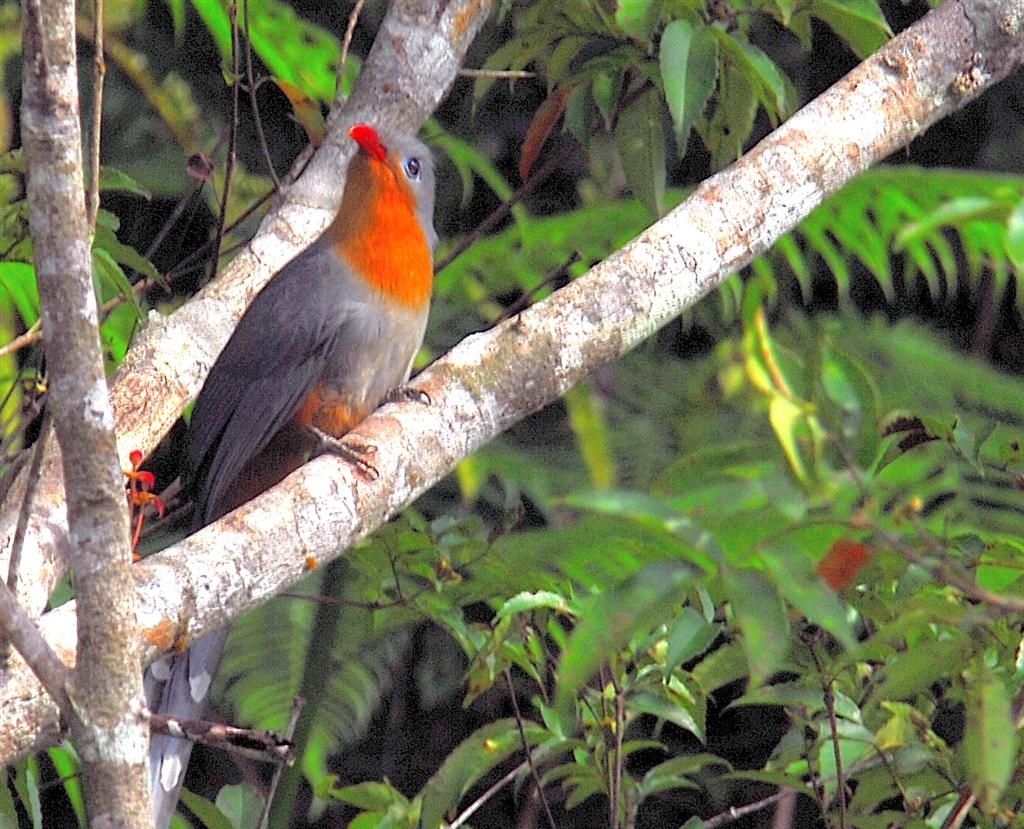| Taxon ID: 57,724 Total records: 39,143 | ||||||||||||||
Xenodermus javanicus
Country
| Country | Myanmar |
|---|---|
| Continent Ocean | Asia |
Classification
| Kingdom | Animalia (COL) |
|---|---|
| Phylum | Chordata (COL) |
| Class | Reptilia (COL) |
| Order | Squamata (COL) |
| Family | Colubridae (COL) |
Taxonomy
| Genus | Xenodermus | Reference | |
|---|---|---|---|
| SubGenus | Vernacular Name | ||
| Species | javanicus | IUCN Threat Status-Year | Least Concern, 2012 |
| SubSpecies | Nat'l Threat Status-Year | Not Evaluated, 2000 | |
| Infraspecies | Reason for Change | ||
| Infraspecies Rank | CITES | ||
| Taxonomic Group | Reptiles | Native Status | Native |
| Scientific Name Author | Reinhardt, 1836 | Country Distribution | Myanmar |
| Citation | Description | Geographic Range [top]
Range Description: This species occurs from extreme southern Myanmar southward to Sundaland (Sumatra, Java, and Borneo). Its presence in Myanmar is marginal , where it is known only from an old record taken at Victoria Point (= Kawthaung) (Smith 1943), a border town at the southernmost tip of mainland Myanmar. There is one record from southern Thailand, from Sai Kao waterfall in Pattani reported by Taylor (1965), but there are no more recent records from this country. It is therefore considered rare ar the northern limit of its range (southern Myanmar and southern Thailand).
Countries occurrence:
Native:
Brunei Darussalam; Indonesia; Malaysia; Myanmar; Thailand
Additional data:
? Upper elevation limit (metres): 1300
Range Map: Click here to open the map viewer and explore range.
Population [top]
Population: The species is seldom encountered, although it is common in Java (David and Vogel 1996). As it frequents irrigated cultivated fields and rice fields (Smith 1943; David and Vogel 1996) it may be increasing in population size.
Current Population Trend: Increasing
Additional data:
? Population severely fragmented: No
Habitat and Ecology [top]
Habitat and Ecology: The species is found from sea level to up to 1,300 m elevation, but is most common between 500 and 1,100 m. It is semi-fossorial and occurs in damp areas near water, including forests, swamps, and marshes, and especially rice fields. It feeds only on frogs. The species is oviparous and lays 2-4 eggs (Smith 1943, David and Vogel 1996). In Peninsular Malaysia it is found in swampy areas and streams up to 400 metres above sea level.
Systems: Terrestrial; Freshwater
Use and Trade [top]
Use and Trade: This species is not used or traded.
Threats [top]
Major Threat(s): No major threats are apparent to this semi-fossorial, secretive species that is tolerant of wet agricultural lands such as rice fields. The species and its frog prey may however be susceptible to agricultural pollutants such as fertilizers and pesticides.
Conservation Actions [top]
Conservation Actions: No conservation actions are in place.
Citation: Wogan, G., Grismer, L. & Chan-Ard, T. 2012. Xenodermus javanicus. The IUCN Red List of Threatened Species 2012: e.T190514A1954501. http://dx.doi.org/10.2305/IUCN.UK.2012-1.RLTS.T190514A1954501.en. Downloaded on 21 February 2017.
Disclaimer: To make use of this information, please check the |
|
| Source |
Record Level
Growth Parameters
| Temperature | 0 | Observed Weight | 0 |
|---|---|---|---|
| Sex | Previous Catalog Number | ||
| Life Stage | Relationship Type | ||
| Preparation Type | Related Catalog Item | ||
| Individual Count | 0 | GML Features | |
| Observerd Individual Count | 0 | Notes |
Collecting Event
Images
|
Additional Info
Synonyms To Manage Synonyms for Xenodermus javanicus, click this link: Synonyms. |
Gonionotus plumbeus Gray, 1846 ¦ Xenoderma javanicum Müller, 1887 ¦ Xenodermus javanica Jan, 1863 ¦ Xenodermus javanicus Duméril & Bibron, 1854 ¦ |
Common Names To Manage Common Names for Xenodermus javanicus, click this link: Common Names. |
|
Localities To Manage Localities for Xenodermus javanicus, click this link: Localities. |
Species Record Details Encoded By:
Carlos Aurelio Callangan
|
Species Record Updated By:
Carlos Aurelio Callangan
|

